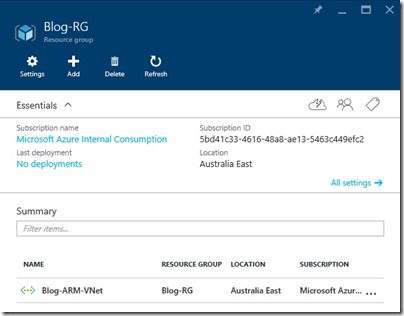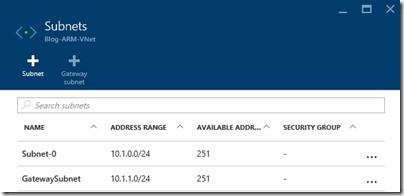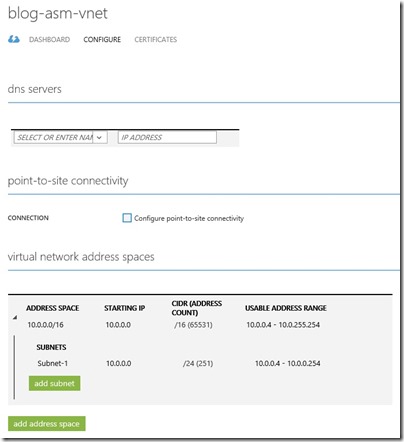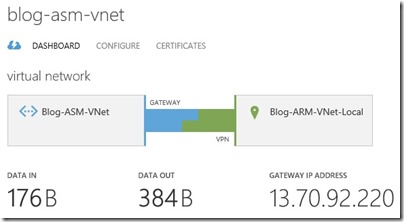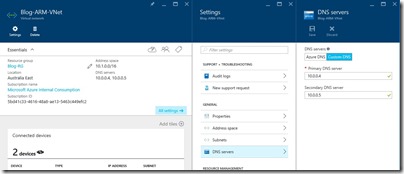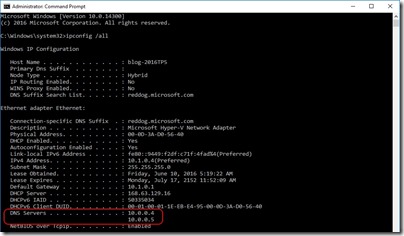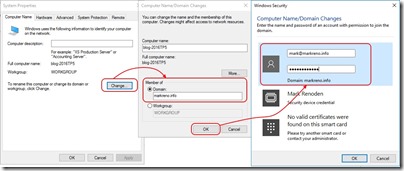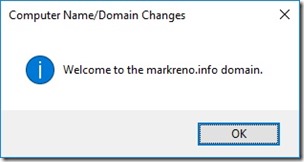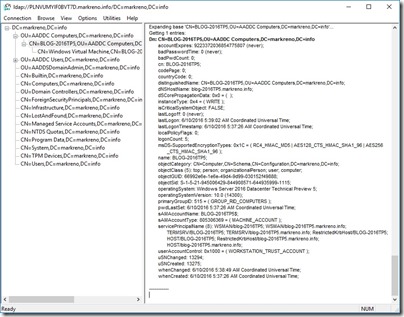Using Azure Active Directory Domain Services with ARM VNets
It’s been a while since my last post – a combination of extended leave and being busy I guess. Even so, I’m back to helping Microsoft customers and hope to share what I learn from those experiences through this blog. So onto the topic of the day …
Imagine you’ve made an effort moving your Azure resources away from Azure Service Manager (classic) and onto Azure Resource Manager (ARM). Everything is going well and you decide there’s a need to utilize Azure Active Directory Domain Services (AAD DS).
Note: If you’re not sure what Azure Active Directory Domain Services is all about, head over to the documentation pages here - https://azure.microsoft.com/en-us/documentation/services/active-directory-ds/ – short story is that your Azure Active Directory tenant is presented to a VNet of your choosing as a pair of Domain Controllers allowing Azure IaaS hosted VMs to perform domain joins, LDAP lookups etc..
Problem: At the time of writing, AAD Domain Services doesn’t support an ARM VNet – only classic VNets are supported. ARM VNet support is coming but it’s not there yet.
Solution: Create a site-to-site VPN between a classic VNet and the ARM VNet using the AAD DS IP addresses as the DNS servers for the ARM VNet
I’ll keep this walkthrough pretty brief. I don’t want to repeat content that is already out there and readily available – just tie it together in a way that makes it easy for you.
I have a resource group and VNet using ARM as follows – Blog-ARM-VNet is configured with address space 10.1.0.0/16 and a subnet called Subnet-0, address range 10.1.0.0/24.
It’s important to note that for steps coming later, a gateway subnet should also be created. In my case, the Blog-ARM-VNet appears as
I also have a classic VNet called Blog-ASM-VNet with adderess space 10.0.0.0/16 and a subnet called Subnet-1, address range 10.0.0.0/24
Now I hook them together with a site-to-site VPN. The steps to do this are covered really well over here - https://azure.microsoft.com/en-us/documentation/articles/virtual-networks-arm-asm-s2s-howto/. After stepping through this guide my classic and ARM VNets are connected
The next thing I want to do is enabled Azure Active Directory Domain Services on my classic VNet. The steps to do this are covered really well at https://azure.microsoft.com/en-us/documentation/articles/active-directory-ds-getting-started/. After following this guide, I have
Notice the two IP addresses assigned to AAD DS. I’ll add these as DNS servers to my ARM VNet
After I add a virtual machine to my ARM VNet and connect to it, I can use and treat AAD DS just as if I had Azure IaaS VMs deployed as Domain Controllers (well there are differences but you can read about those at the documentation link posted above)
- Anonymous
December 30, 2016
Great article! - Anonymous
March 29, 2017
What is the best practice here if I now want to have a site-to-site VPN to my on-premise network AND I wish my on-premise machines to be able to see the AAD DS (in the CLassic VNET) as well as the VMs in the ARM VNET?- Anonymous
April 02, 2017
To my understanding, AAD DS is not intended to be used by on-premises resources. It's specifically for vNets that don't have connectivity to on-premises where traditional DCs reside.
- Anonymous
- Anonymous
March 29, 2017
By the way, you can also use a VNET-to-VNET Peering between the Classic and ARM VNET.https://docs.microsoft.com/en-us/azure/vpn-gateway/vpn-gateway-connect-different-deployment-models-portal- Anonymous
March 29, 2017
I meant to post this link: https://docs.microsoft.com/en-us/azure/virtual-network/virtual-network-peering-overview- Anonymous
April 20, 2017
The comment has been removed
- Anonymous
- Anonymous
